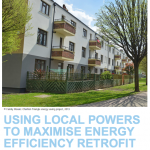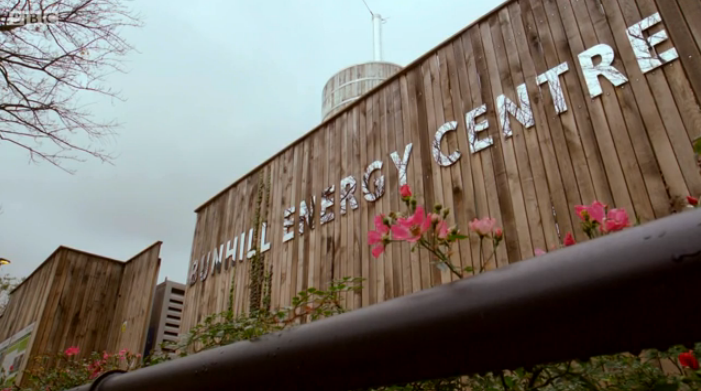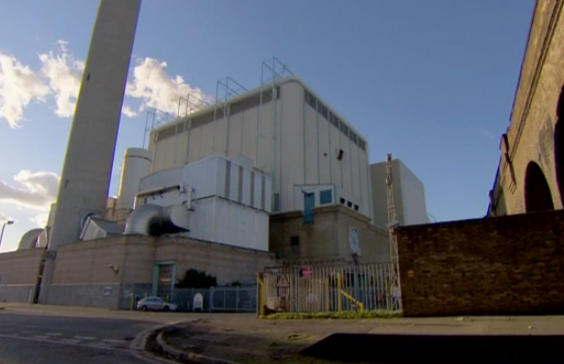Site search:
-
What’s new?
Energy for London Tags
Brent Buildings Camden Carbon Emissions CHP Cities Climate Adaptation Community Heating Community Initiatives Croydon Data DECC Decentralised Energy Distribution ECO Energy Costs Energy Efficiency Enfield FIT Fuel Poverty Funding Green Deal Hackney Haringey Housing Islington Lambeth Library Local Authorities Mayor Newham Ofgem Olympics Photovoltaics Planning RE:FIT RE:NEW Renewable Energy Retrofit Southwark Tower Hamlets Transport Waltham Forest Waste WestminsterEnergy Archives:
- February 2021 (1)
- January 2021 (15)
- December 2020 (15)
- November 2020 (9)
- October 2020 (3)
- August 2020 (5)
- July 2020 (3)
- June 2020 (4)
- April 2020 (10)
- March 2020 (5)
- February 2020 (2)
- January 2020 (3)
- October 2019 (1)
- September 2019 (4)
- August 2019 (2)
- July 2019 (1)
- August 2018 (1)
- November 2016 (8)
- October 2016 (8)
- September 2016 (2)
- August 2016 (8)
- July 2016 (14)
- April 2016 (12)
- March 2016 (16)
- February 2016 (8)
- January 2016 (4)
- December 2015 (1)
- November 2015 (1)
- October 2015 (16)
- September 2015 (3)
- June 2015 (1)
- May 2015 (1)
- April 2015 (1)
- March 2015 (1)
- February 2015 (1)
- January 2015 (1)
- December 2014 (18)
- November 2014 (4)
- August 2014 (8)
- July 2014 (7)
- June 2014 (25)
- May 2014 (8)
- April 2014 (4)
- March 2014 (12)
- February 2014 (7)
- January 2014 (13)
- December 2013 (11)
- November 2013 (15)
- October 2013 (15)
- September 2013 (18)
- August 2013 (5)
- July 2013 (20)
- June 2013 (33)
- May 2013 (8)
- April 2013 (16)
- March 2013 (25)
- February 2013 (14)
- January 2013 (20)
- December 2012 (23)
- November 2012 (23)
- October 2012 (25)
- September 2012 (14)
- July 2012 (12)
- June 2012 (43)
- May 2012 (20)
- April 2012 (8)
- March 2012 (40)
- February 2012 (39)
- January 2012 (40)
- December 2011 (22)
- November 2011 (40)
- October 2011 (33)
- September 2011 (48)
- August 2011 (40)
- July 2011 (58)
- June 2011 (41)
- May 2011 (80)
- April 2011 (38)
- March 2011 (33)
- February 2011 (25)
- January 2011 (24)
- December 2010 (3)
- November 2010 (7)
- October 2010 (6)
- September 2010 (7)
- August 2010 (1)
- July 2010 (2)
- June 2010 (4)
- May 2010 (1)
- March 2010 (3)
- February 2010 (3)
- December 2009 (5)
- November 2009 (2)
- October 2009 (3)
- July 2009 (3)
- June 2009 (1)
- April 2009 (1)
- March 2009 (1)
- February 2009 (1)
- January 2009 (1)
- December 2008 (2)
- October 2008 (1)
- September 2008 (1)
- July 2008 (1)
- March 2008 (2)
- January 2008 (2)
- October 2007 (1)
- September 2007 (3)
- July 2007 (1)
- March 2007 (1)
- February 2007 (3)
- November 2006 (3)
- August 2006 (1)
- February 2006 (1)
- May 2005 (1)
- February 2004 (1)
Tag Archives: Islington
London Power Tunnels latest
October 2015: On Sunday 25 October an electricity transformer, the size of a large truck will be delivered to National Grid’s new Highbury Substation, on Seven Sisters Road, Islington – all part of the major London Power Tunnels Project. More here on this new piece of infrastructure. And more on the London Power Tunnels project here.
Energy & Climate Questions to the Mayor
December 2014: This month the Mayor has been asked questions in relation to:
alternative energy for maritime facilities; the Mayor’s Energy Advisor’s letter to the Treasury to support tax incentives to help community energy projects; the Belvedere Energy from Waste plant and the Viridor Energy Recovery plant in Beddington, Sutton; the Mayor’s Energy Advisor’s visit to Shanghai and Beijing; the Mayor’s support for minimum energy efficiency standards in the private rented sector; Crossrail stations using decentralised energy; whether the Mayor supports the call for energy efficiency to be made a UK infrastructure priority; research commissioned by the GLA Environment Team this year costing more than £10,000; Islington Council’s recent success at the Energy Institute Awards; TfL officers responsible for examining the potential for solar energy; and again for the Metropolitan Police Service; TfL’s total electricity spend – and the the proportion of electricity it plans to source for low carbon generators in London; whether TfL has undertaken an assessment of solar PV potential across its estate; meetings the Mayor has had with the London Sustainable Development Commission; the amount of solar PV installed across the Met Police’s estate; and also TfL’s estate; a programme for deploying solar across the Met Police’s estate; the Mayor’s support for Cold Homes Week 2015; Excess Winter Mortality (EWM) statistics for London; the number of children in London living in fuel poverty; the number of Londoners living in fuel poverty; if the Mayor had worked with Public Health England on fuel poverty issues; how the Mayor will be helping London households in fuel poverty this winter; Mayoral support for anaerobic digestion facilities in London; the Mayor’s support to older Londoners in fuel poverty; decentralised energy support unit (DEPDU) work on the North London Heat and Power project; the number of RE:NEW households visited with children; RE:NEW programme progress reports; companies on the RE:NEW programme procurement framework and discussions with Brent Council on fracking.
Previous months questions to the Mayor can be found here.
Posted in Decentralised Energy, Energy Efficiency, News, Renewable Energy
Tagged Brent, Buildings, Fuel Poverty, Housing, Islington, Photovoltaics, Renewable Energy, Sutton, Transport, Waste
Leave a comment
North London ‘Smart Homes’ retrofit scheme launches
November 2014: A news report highlighting a new ‘Smart Homes’ retrofit Project which provides “homeowners in six North London boroughs access to upgrades that can help to significantly boost the sustainability of their properties…The year-long scheme will be the first of its kind in the UK, and aims to make it simpler and more affordable for residents to install insulation that will help to reduce their energy costs.”
Haringey Council’s website reveals that the project is one that was successfully awarded funding earlier this year under government’s Green Deal Communities Fund, details of which can be found in an earlier post here. The project focuses on solid wall insulation and on Victorian and Edwardian terraces where simple, cheap energy upgrades can be difficult because of the design of the older buildings. Residents in Haringey, Camden, Enfield, Hackney, Islington and Waltham Forest are eligible for the scheme, which is designed see more than three quarters of work carried out by local traders. The scheme is open to both owner occupiers and landlords (or tenants with landlord consent) from the boroughs and is available up to 31st March 2015.
Further information can be found on the Smart Homes pages on Camden’s website – and on Camden’s Green Deal page here.
Posted in Energy Efficiency, News
Tagged Camden, Energy Efficiency, Enfield, Green Deal, Hackney, Haringey, insulation, Islington, Retrofit, Solid Wall Insulation, Waltham Forest
Leave a comment
Focus on London’s Private Rented Sector and Energy Efficiency
August 2014: An important Early Day Motion (EDM) for London is currently doing the rounds in the House of Commons. EDM 95 ‘Minimum Energy Efficiency Standards for Private Rented Homes‘ sets out:
- the Private Rented Sector (PRS) has over five times more homes in EPC Bands F and G than the social housing sector
- nearly half the PRS households living in Band F and G properties are in fuel poverty
- the Energy Act 2011, placed a duty on the Government to introduce a minimum energy efficiency standard for the PRS by April 2018
- the EDM calls on the Government to ensure that the regulations are made clear and enforceable by specifying Band E as the minimum standard in all cases, and by keeping exemptions to an absolute minimum.
Suprisingly, only 4 London MPs have as yet signed the EDM:
- Corbyn, Jeremy (Labour) Islington North
- Jackson, Glenda (Labour) Hampstead and Kilburn
- Love, Andrew (Labour) Edmonton
- McDonnell, John (Labour) Hayes and Harlington
The Mayor’s recent consultation on a London Housing Strategy sets out how critical the PRS is to London and the challenges faced by Londoners living in rented accommodation. These include:
- Rents are higher in the capital, with the median monthly rent for a private rented home at £1,300, compared with a national average of £595.20 Private sector tenants in London spend an average of 36% of their gross household income on rent.
- the proportion of private renting households with children has increased sharply, from 19% to 29% between 2001 and 2011, indicating a growing reliance on this sector by families.
- Retrofitting in the private rented sector has always been challenging, but the Mayor remains committed to seeing progress.
Together with the knowledge of the poorer levels of energy efficiency in rental properties, London clearly has much to do to help tackle energy costs and fuel poverty in the PRS.
The Mayor has introduced a ‘London Rental Standard‘ (updated in May 2014) setting out a voluntary set of minimum standards that the Mayor expects from landlords, managing agents and letting agents that operate in London’s private rented sector. Though London’s PRS faces particular stresses on energy, the Standard does not go above the national regulation requirements but simply points to the Energy Act’s defined minimum standard on energy efficiency:
- Energy efficiency: landlords must work towards compliance with duties imposed upon them by the Energy Act 2011 especially related to requests for energy efficiency improvements by tenants and in relation to low ratings in energy performance.
And, in relation to this Energy Act 2011 duties, in July DECC issued a consultation on the of the introduction of the Private Rented Sector Minimum Energy Efficiency Standard Regulations setting out a series of questions around the scope and implementation of the regulations (with a deadline for responses of 2 September 2014). Minutes from a working group that lead to the development of the consultation can be viewed here.
London’s particular challenges are not picked up anywhere in the consultation document or impact assessment. Delivering energy efficiency to London’s PRS was however looked at in a National Energy Action (NEA) seminar earlier this year, which highlighted London’s added logistical, demographic and architectural challenges. Presentations from the event can be viewed here.
Much more information on the PRS is set out in the April 2014 ‘Housing In London‘ evidence base document.
Posted in Energy Efficiency, News
Tagged Camden, Ealing, Energy Efficiency, Enfield, Islington
Leave a comment
Bunhill CHP
Joining the dots…
March 2014: CIBSE article on CHP and district heating in London “With the Government and planners keen for developers to look at district heating for communal heating schemes, the technology is on the up and up. But size matters with heat networks are are some schemes too small to reap the benefits?” Good article – raising some real concerns over what technical and financial concerns should be considered when pushing district heating – with contributions from the GLA and Islington Council: read the full article here.
Decentralised Heat and Power Points to London’s Energy Future
January 2014: Still a few days left to see BBC’s excellent Inside Out London programme. The first half covers the increasing levels of energy theft being observed by energy companies and -18 minutes in – the programme looks at potential future solutions to the provision of more affordable heat and power in London.
The growth in local energy solutions, such as combined heat and power (CHP) plants and the introduction of new district heating schemes are highlighted, including recent projects installed in Islington (Bunhill CHP) and the heat network constructed from the SELCHP waste to energy scheme, which transports low cost heat to 2,500 households in Southwark with an approximate 22% reduction in heating charges.
Developing Heat Networks in London
November 2013: At the BRE’s recent event Developing heat networks in the UK three presentations were delivered on developments in London – links to which follow below:
Bunhill Heat and Power – Charlotte Large, Decentralised Energy Programme Manager, Islington Council
Identifying secondary heat sources for future sustainable heat networks – Peter North, Senior Manager – Programme Delivery (Sustainable Energy), GLA
The third presentation by Ian Smith, Head of Sustainable Services, Southwark Council, on London’s first energy from waste district heating network, can be found here.
Posted in Decentralised Energy, News
Tagged CHP, Community Heating, Decentralised Energy, Islington, SELCHP, Southwark, Waste
Leave a comment
Using Local Powers to Maximise Energy Efficiency Retrofit Toolkit
 August 2013: CAG Consultants on behalf of the GLA have developed a new toolkit – Using Local Powers to Maximise Energy Efficiency Retrofit Toolkit – “to help London’s councils identify and implement solutions to help attract investment and delivery for energy efficiency measures. It focuses on three commonly cited challenges: planning, data and logistics.” The report highlights that:
August 2013: CAG Consultants on behalf of the GLA have developed a new toolkit – Using Local Powers to Maximise Energy Efficiency Retrofit Toolkit – “to help London’s councils identify and implement solutions to help attract investment and delivery for energy efficiency measures. It focuses on three commonly cited challenges: planning, data and logistics.” The report highlights that:
- The opportunity for energy retrofitting in London’s housing is immense: more than one in five of the U.K.’s solid walled homes are in the capital, as well as 14 per cent of England’s fuel poor homes.
- Energy efficiency projects can regenerate entire communities, drive up housing values and engage residents in wider issues of sustainability
- Retrofitting also provides an opportunity for pioneering local authorities to get an edge in the growing energy efficiency market and generate local jobs.
- London has the highest proportion of properties in conservation areas of any UK city – around 500,000 properties. For these properties, planning permission is required for most works which change the external appearance of the property.
The guide provides some helpful references to planning guidance issued by Camden (also see here and here for further information) and Haringey to help support energy efficiency retrofit measures such as solid wall insulation. A further barrier often faced by retrofit programmes has been identifying the most vulnerable homes that would benefit from increased levels of insulation as a priority, and the report provides some useful information on data-sharing initiatives undertaken by Southwark and Haringey councils, working alongside colleagues in housing and benefits teams, to help overcome this [p 27-30].
Posted in Energy Efficiency, News
Tagged Energy Efficiency, Haringey, Housing, Islington, Local Authorities, Retrofit, Southwark
Leave a comment
North London Retrofit SME Network
May 2013: Waltham Forest have posted details of work being done to establish a new network for ‘green’ SMEs.
“North London boroughs are working together to develop a network of SMEs (small and medium sized enterprises) located in the North London area delivering energy efficient retrofit services and installations. The Council is working to promote uptake of energy retrofit in each borough.
The Council wants to build upon and support existing local supply chains to deliver this work. This will grow the local green economy and develop an SME/labour market that can be exported beyond North London.
The aims of the North London Retrofit SME Network are:
- Create a directory of SME builders and installers who carry out green retrofit in North London. The North London SME Retrofit Directory is open to any SME delivering retrofit services located in the boroughs of Waltham Forest, Camden, Enfield, Haringey, Islington and Newham
- Start a forum to hear from local SMEs how Councils can support locally delivered retrofit in North London
- Create networking opportunities among SMEs working in the area
- Strengthen links with local training providers
- Sign post local retrofit SMEs towards the different initiatives offering support and training in this growing market both locally and London wide
To find out more about the North London Retrofit SME Directory and Network please email: minka.mcinerney@haringey.gov.uk
Posted in News
Tagged Camden, Energy Efficiency, Enfield, Haringey, Islington, Newham, Retrofit, SMEs, Waltham Forest
Leave a comment
Islington Establish New Carbon Offset Fund
April 2013: One of the many interesting things being developed by Islington – as set out in their recently launched Energy Strategy 2013-2016 – is the creation of a new ‘Carbon Offset Fund’. The Energy Strategy sets out that:
“A Carbon offset policy will be implemented in 2013 which will generate funding for investment in energy efficiency of existing social housing. As part of the Energy Statement building applicants will need to demonstrate how a scheme meets the relevant on site carbon emissions reduction targets by following the energy hierarchy:
- Maximise energy efficiency
- Supply energy efficiently using low carbon heating and cooling systems
- Incorporate renewable energy
- Offset remaining carbon emissions.
The council will look to use the carbon offset fund to mitigate emissions from existing stock by targeting specific projects that lower carbon emissions such as cavity wall and solid wall insulation , boiler replacements, improvements to communal heating systems and decentralised energy project work. In relation to DE, the energy strategy states that Islington has identified 14 heat network opportunities across the borough, which it intends to implement between 2013 and 2018. The total cost is estimated to be £42M with a funding gap of £20M expected to be filled by the Community Infrastructure Levy (CIL).
Islington’s recently adopted Environmental Design Supplementary Planning document (SPD) highlights (para2.02) that “implementation of the carbon offset mechanism (part of policy CS10) will generate significant funding for investment in the energy efficiency of housing, including existing social housing – given that around 75% of the current building stock is likely to be still standing in 2050, this mechanism will be crucial to addressing fuel poverty.”
Importantly , the SPD sets out the offset costs:
” For all major developments the financial contribution shall be calculated based on an established price per tonne of CO2 for Islington. The price per annual tonne of carbon is currently set at £920, based on analysis of the costs and carbon savings of retrofit measure suitable for properties in Islington. The calculation of the amount of CO2 to be offset,and the resulting financial contribution, shall be specified in the submitted Energy Statement. The spending of carbon offset payments and monitoring of CO2 savings delivered will be managed by the council.”
Minor developments are to be treated differently: “As minor schemes are not required to produce Energy Statements to the same level of detail as major developments the process for carbon offsetting has been simplified. The cost of the offset contribution is a flat fee based on the development type as follows: Houses – £1500 per house; Flats – £1000 per flat. “
The rationale behind these cost charges is set out in some research undertaken for Islington – see AECOM Davis Langdon report Promoting Zero Carbon
Development.




